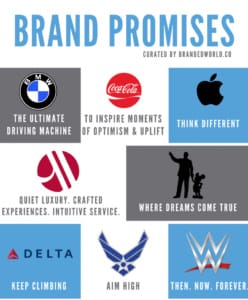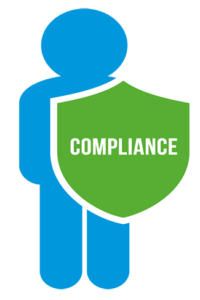 I’ll be presenting my Keynote speech – What kind of experience does your Contact Centre deliver? – at the Customer & User Experience Expo in London next week.
I’ll be presenting my Keynote speech – What kind of experience does your Contact Centre deliver? – at the Customer & User Experience Expo in London next week.
More than 5,000 Customer engagement professionals are expected to descend on ExCel London (the ExCel Exhibition Centre) for the Expo, Europe’s largest Customer experience event of the year.
I look forward to meeting & engaging with those making the trek to London!
I’ve put the details for the Exhibition at the end of this short post.
So what will I talk about?
Over the years I’ve managed many Contact Centre based Mystery Shopper programs. And my responsibility in these programs was to advise management how to improve the quality of the experience they delivered to their Customers.
In this Keynote speech I’m going to share stories from my work with Universal Studios, the Singapore Government and an award winning hotel to help Contact Centre folks
- Proactively define the type of service ‘we deliver around here’
- Understand and use the 3 key inputs to select Performance standards for quality conversation
- Consider a measurement approach that addresses the needs of Customers today

I’ll also share some rather hilarious (and real life) examples of quality standards gone wrong. Because sometimes it’s not just what to do – it’s what not to do.
I’ll close the session with a list of tips to help your Centre deliver a better Customer experience.
I guarantee a few laughs – and real life stories & examples are always the best. You’ll love the story about Kung Fu Panda and also the 12 Teeth.
Exhibition details
- Wednesday, 27 March, and Thursday, 28 March, 10:00 a.m.– 5:00 p.m.
- ExCel Exhibition Centre, Sandstone Lane, London
- http://www.cu-experienceshow.co.uk/
- I speak on the 28th at 11:00AM and again at 2:45PM at the designate Keynote Theatre
See you in London next week!
Daniel





 Thanks for reminding me of what a great place this is. I was proud to see our accomplishments across the years.
Thanks for reminding me of what a great place this is. I was proud to see our accomplishments across the years. We used the term ‘barriers’. As in, what specifically, in your job role, holds you back from achieving these values.
We used the term ‘barriers’. As in, what specifically, in your job role, holds you back from achieving these values. And with each opinion I attached a story.
And with each opinion I attached a story.

 But, over time and with your influence, a great Service Vision can readily evolve into an organizational CX Vision.
But, over time and with your influence, a great Service Vision can readily evolve into an organizational CX Vision.


 But one potential barrier I’ve seen often is this one.
But one potential barrier I’ve seen often is this one.






 In Adventure Cove there’s a very relaxing ‘ride’ where you recline in a big plastic inner tube and float around a long lazy river that meanders around the entire Waterpark for maybe 45 minutes or so.
In Adventure Cove there’s a very relaxing ‘ride’ where you recline in a big plastic inner tube and float around a long lazy river that meanders around the entire Waterpark for maybe 45 minutes or so. When a family with children was in the vicinity, a few of the Lifeguards would pull out water pistols and open up a mock battle with the kids squealing and the parents laughing along.
When a family with children was in the vicinity, a few of the Lifeguards would pull out water pistols and open up a mock battle with the kids squealing and the parents laughing along.

 Each one told me the same thing.
Each one told me the same thing. I can already hear some of the villagers gathering their pitchforks and torches to come burn down your Luddite castle.
I can already hear some of the villagers gathering their pitchforks and torches to come burn down your Luddite castle. Who are we? What do we promise to our Customers either explicitly or implicitly?
Who are we? What do we promise to our Customers either explicitly or implicitly? Don Peppers in his terrific book, “Customer Experience: What, How and Why Now” lays out the four attributes of a frictionless Customer Experience.
Don Peppers in his terrific book, “Customer Experience: What, How and Why Now” lays out the four attributes of a frictionless Customer Experience. Because a pretty map is just that – pretty. If that’s your goal just buy a painting.
Because a pretty map is just that – pretty. If that’s your goal just buy a painting.









 “Mr/Mrs. XX, thank you so much for helping me start my day off so wonderfully.”
“Mr/Mrs. XX, thank you so much for helping me start my day off so wonderfully.” And then they Mystery Shopped it.
And then they Mystery Shopped it. Typically I see Small Talk expressed as “Have you had your lunch yet sir?” or “How’s the weather in Singapore today?”
Typically I see Small Talk expressed as “Have you had your lunch yet sir?” or “How’s the weather in Singapore today?” But grafting on Agent behaviours in the hope they deliver a positive Customer Experience shouldn’t involve Agents saying funny things.
But grafting on Agent behaviours in the hope they deliver a positive Customer Experience shouldn’t involve Agents saying funny things.




 Persona 1: A working professional who is likely to be approved to take the CCXP exam and who is likely to pass the exam without too much effort or study.
Persona 1: A working professional who is likely to be approved to take the CCXP exam and who is likely to pass the exam without too much effort or study.